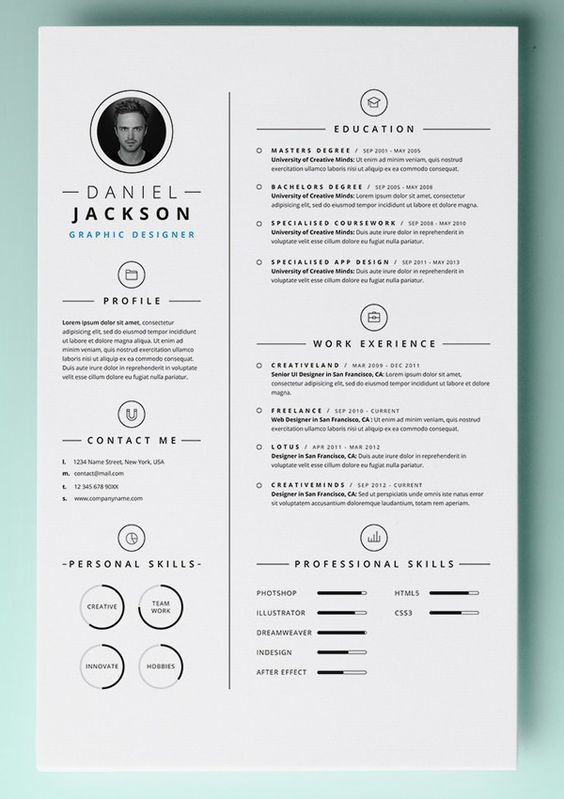CV
How to make a curriculum vitae: example and CV template

How to make a CV
Knowing how to write a perfect curriculum vitae is the first step towards finding – and changing – a job. But what are the best strategies for writing an effective CV? In other words: how do you make a good CV? There is no universal recipe and a lot depends on all the elements involved:
- From the candidate;
- From the company to which the curriculum is addressed;
- From the policies of the company or the selection agency.
If there is a lot of subjective, in short, it is also true that there are certainly some tips that you can follow to create one that best meets the needs of the company you are sending your application to. But what exactly is a resume for? To give an exact (or almost) photograph of you to those who still don’t know you. It goes without saying that the curriculum vitae is essential for the job search: through this tool you can best represent
- Experiences;
- Capacity;
- Skills.
All the details that may attract the interest of the company you are applying for must be indicated in the curriculum. The curriculum vitae – or CV, in its abbreviated form – works when it is done simply and clearly and is accompanied by a good motivational letter. The curriculum must represent the description of yourself and your experiences: with the curriculum vitae, you can tell a small mini-biography, a sort of business card, which must attract the attention of the selectors!
- Remember: it is always good to accompany your CV with a motivational letter addressed to the company where you want to take the interview.
Example
The curriculum vitae or “c.v.” must reflect – both in the presentation graphics and in its contents – the character of its author and must expose, in a maximum of two pages, the professional goal and the results achieved. To attract the attention of the recruiter it is important that the content of the c.v. it is written with care: clarity of presentation, ability to synthesize and fluidity must be the characteristics of the text you are about to write.
It is not easy to build a valid and short description of yourself, of the skills, acquired, of the activities or studies carried out, but do not despair! Companies actually focus on a few but important points, so there are few to deal with. A good curriculum vitae for work is structured in blocks and is usually developed in sections.

What to include in your CV:
- Personal data: name, surname, address, telephone, place of birth, marital status.
- Educational experiences: studies completed in descending chronological order, starting from the most recent experience (master or degree), up to the high school diploma. If school grades are good, indicate them, otherwise, it is better to do without them. Write down the subject of the thesis.
- Professional experience: Current and previous occupation: always specifying the position held in terms above all objectives and responsibilities, dependence, collaborators, etc … and maintaining a descending chronological order. In this section, specify any knowledge and experience acquired: what you can do and in which fields, with which methodologies, transferability to other sectors, strengths, and weaknesses. For those who already have several professional experiences behind them, I recommend reversing the order, first talking about work experiences (starting with the most recent) and then about training. Who reads your c.v. for a selection, in fact, he is primarily interested in what you can do.
- Knowledge of foreign languages: it is advisable to indicate the level of proficiency in understanding the text, conversation, translation.
- Computer skills: programming languages, ability to use the main software packages, specific experiences in graphic, management, and database programs. To give the image of order and clarity, create bulleted lists.
- Extra professional interests: cultural activities, hobbies.
- Aspirations: plans for the future. Ambitions, job aspirations, and motivations. This section must integrate perfectly with the others. Coherence in your CV is one of the elements that rule which style to use.
From a formal point of view your CV should be:
- Short, because the time the reader can dedicate to you is limited. It must therefore be succinct, but not skimpy.
- Smooth and easy to read. The setting is certainly airy and spacious, so you can read quickly and effortlessly.
- Simple and clear, but not dry.
- Detailed, but without getting fussy.
- Devoid of “evaluative” connotations, but at the same time personal.
- Effective, i.e., being able to give a brilliant image of oneself.
- Neat from a graphic point of view: error-free, neatly written, pleasing to the eye.
The curriculum vitae, when it is not necessary to fill a format with predefined fields, is a short self-describing report. We speak of “relationship” because the task is to report to a person clearly, concisely but also exhaustively on a particular topic.
Answers for some questions:
- How to make a perfect resume?
There is no universal recipe: it depends on the company, the candidate, and experience.
- What to write in the email to send a resume?
Read the guide to writing an effective cover letter.
- How to fill out a resume?
In your CV you will need to indicate your experiences, your skills, and your skills.







